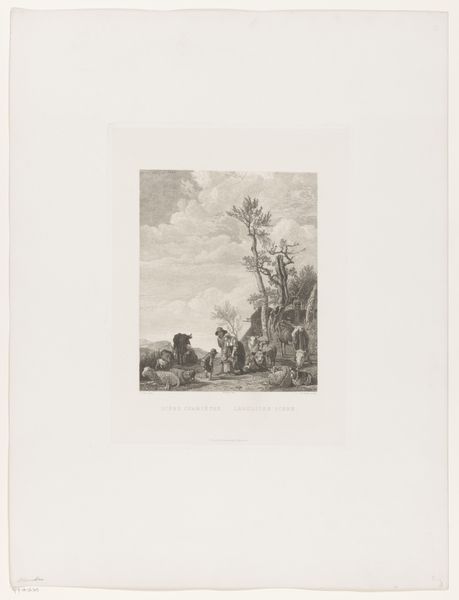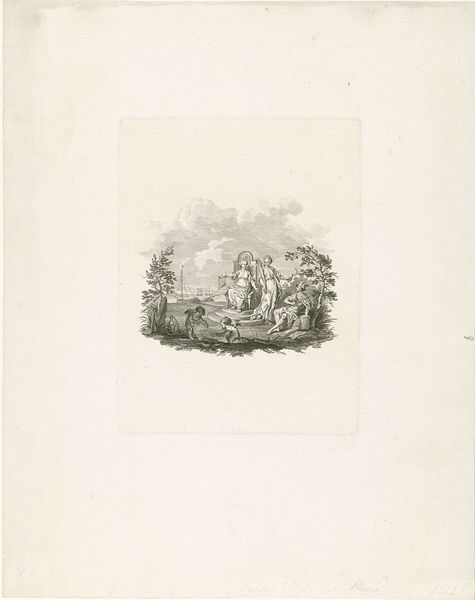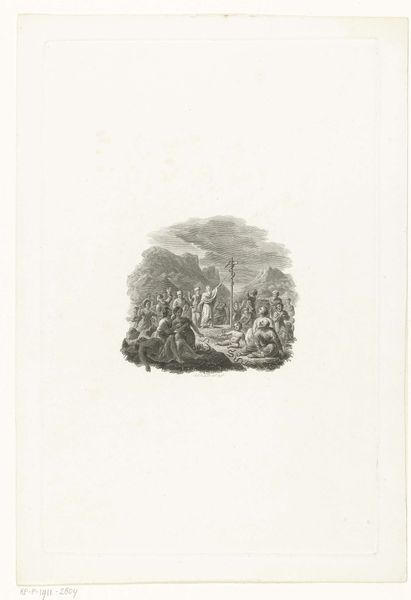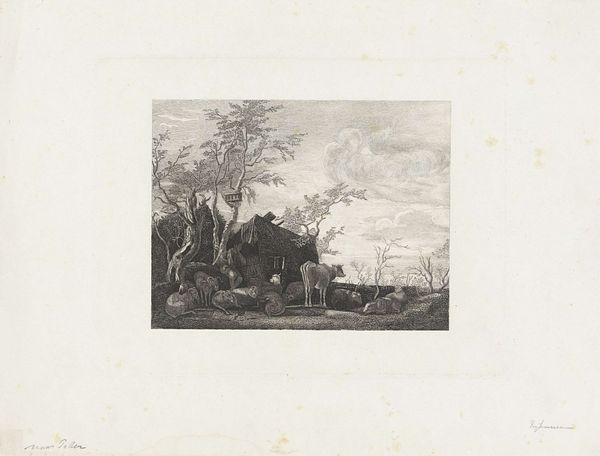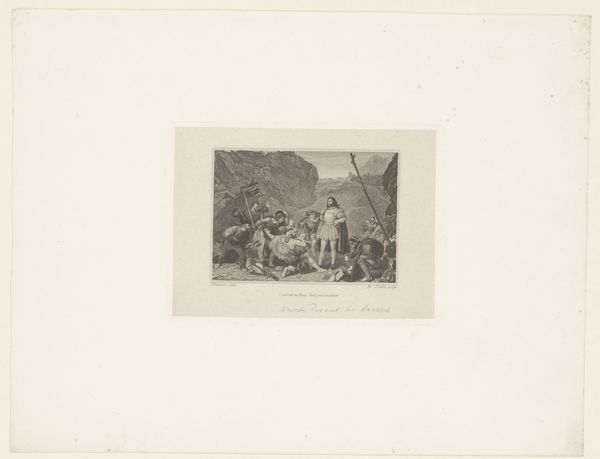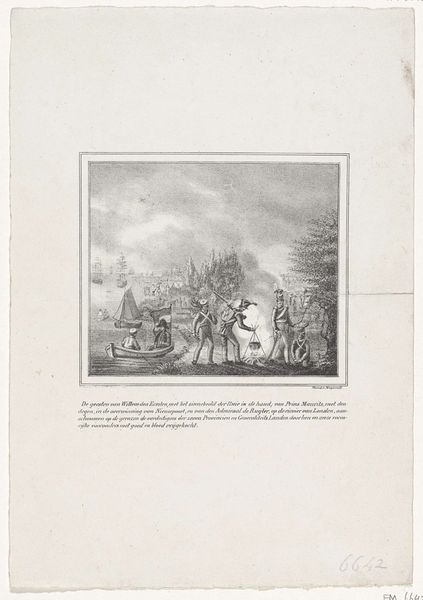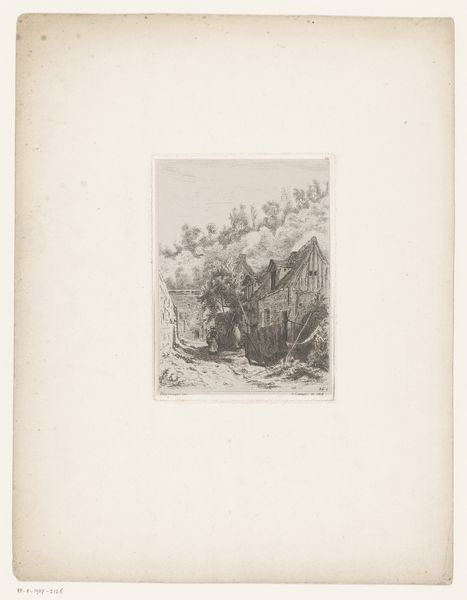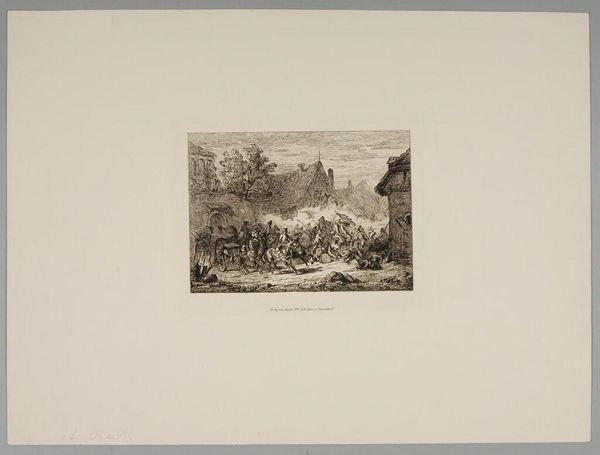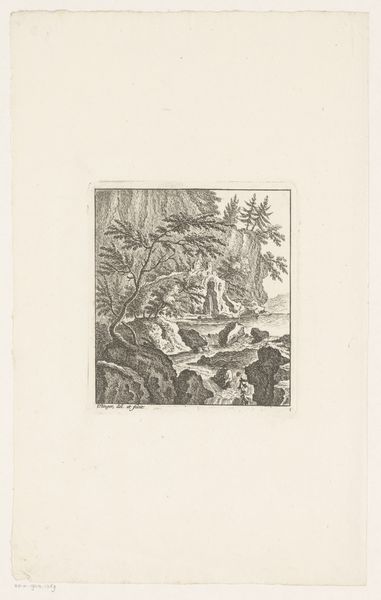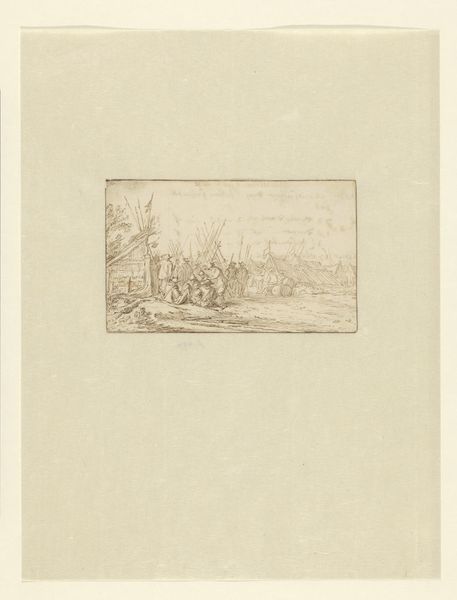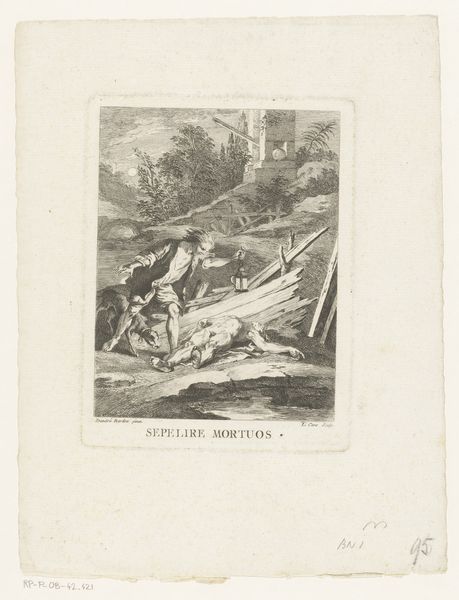
Dimensions: height 140 mm, width 80 mm, height 222 mm, width 160 mm
Copyright: Rijks Museum: Open Domain
Editor: This is Rodolphe Bresdin's "Two Hunters Surprised by Death," an etching from sometime between 1857 and 1861. It has a spooky vibe, with so much detail packed into such a small scene! What jumps out at you when you look at it? Curator: The density of the etching and the artist’s obsessive mark-making! Look how Bresdin meticulously layers line upon line to create this hallucinatory landscape. Considering the materials he employed—the metal plate, the etching tools, the acid—how do these humble materials convey such a macabre scene? This wasn't mass-produced, churning out countless identical prints. Editor: It is interesting to consider that these lines were carefully engraved, like it involved labour, even if there are a few similar results... Could you tell me about the imagery and how that material production influenced this? Curator: Observe the hunters themselves and the skeleton lurking in the undergrowth. Bresdin wasn’t working with oil paint on a grand canvas; he was using industrial materials to portray a narrative about mortality, class, and labor. Notice how he uses the dense line work to highlight their fashionable clothes against Death crawling towards them? Consider their status compared to Bresdin. Editor: You're right, they look unaware and their wealth, conveyed by the etching itself and what would be the access to clothing that implies some level of prosperity is really telling. What does this mean in terms of consumerism at the time? Curator: It is true that this narrative is connected to death, but think further, what narrative might Bresdin want to portray about his social class versus the upper class and industrial materials that enable the artistic piece to be manufactured. That interplay seems more telling. Editor: So, it is not merely a dance with death but, perhaps, a comment on socioeconomic imbalance visualized through a careful practice? That gives me a lot to think about in relation to art from that era. Curator: Exactly. I will need to ponder how other people receive it as well to confirm my bias!
Comments
No comments
Be the first to comment and join the conversation on the ultimate creative platform.
